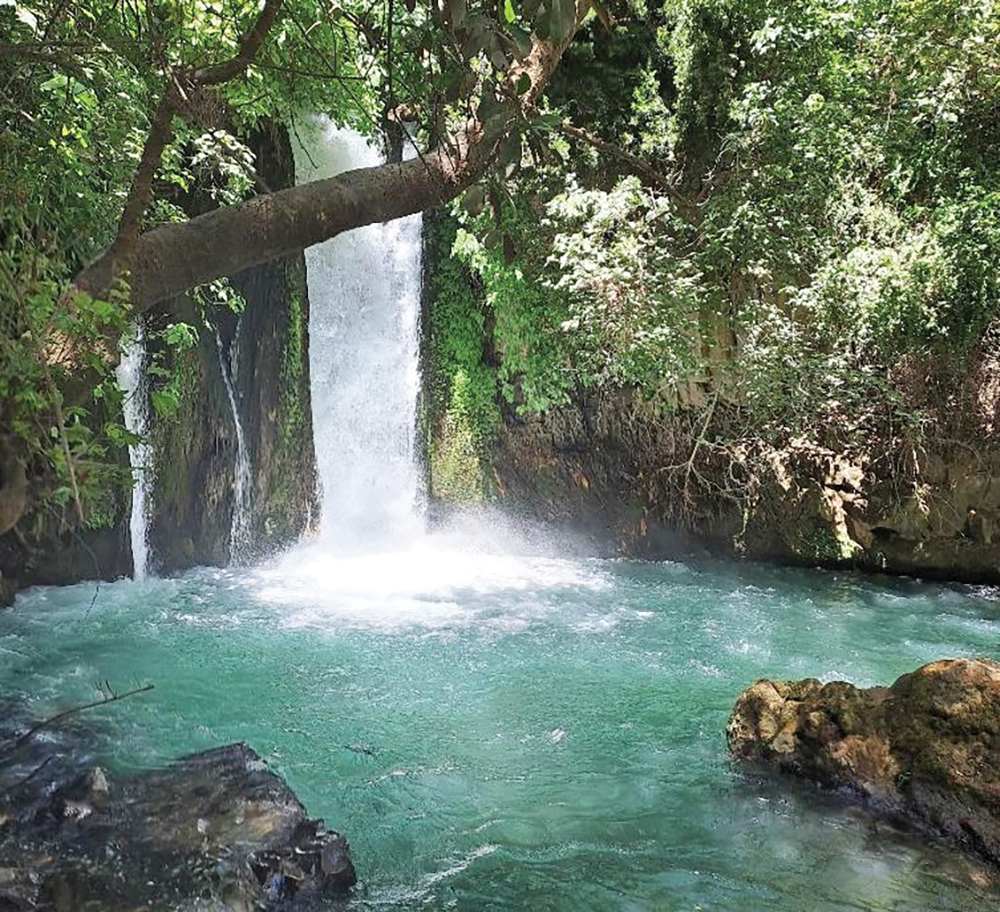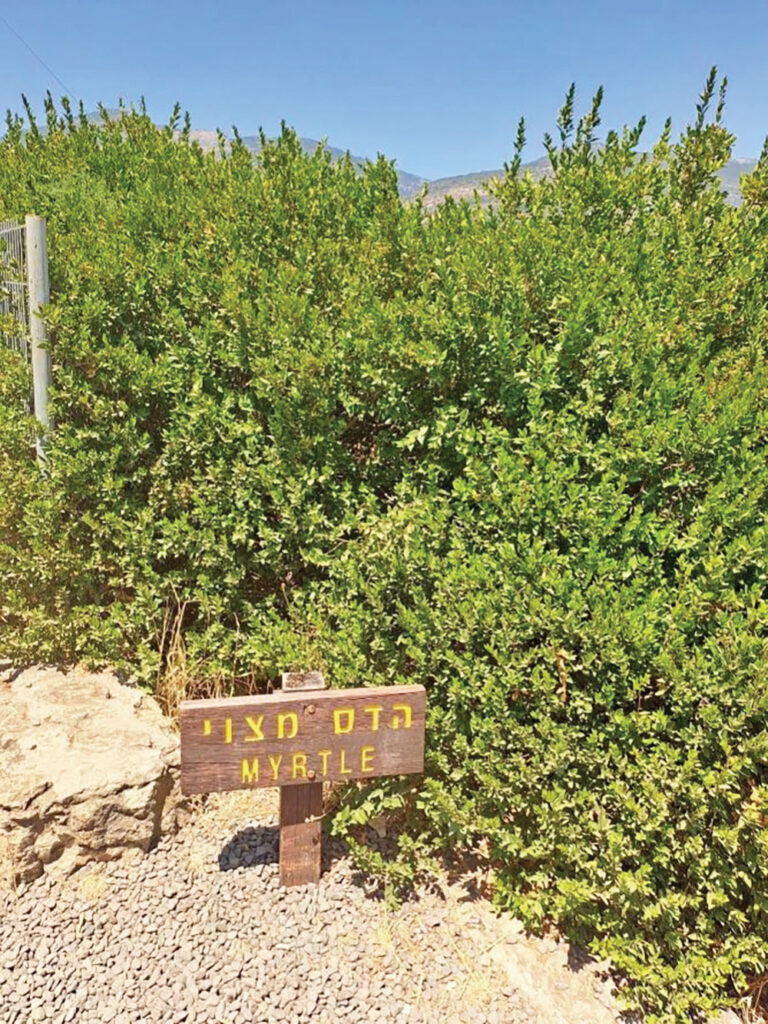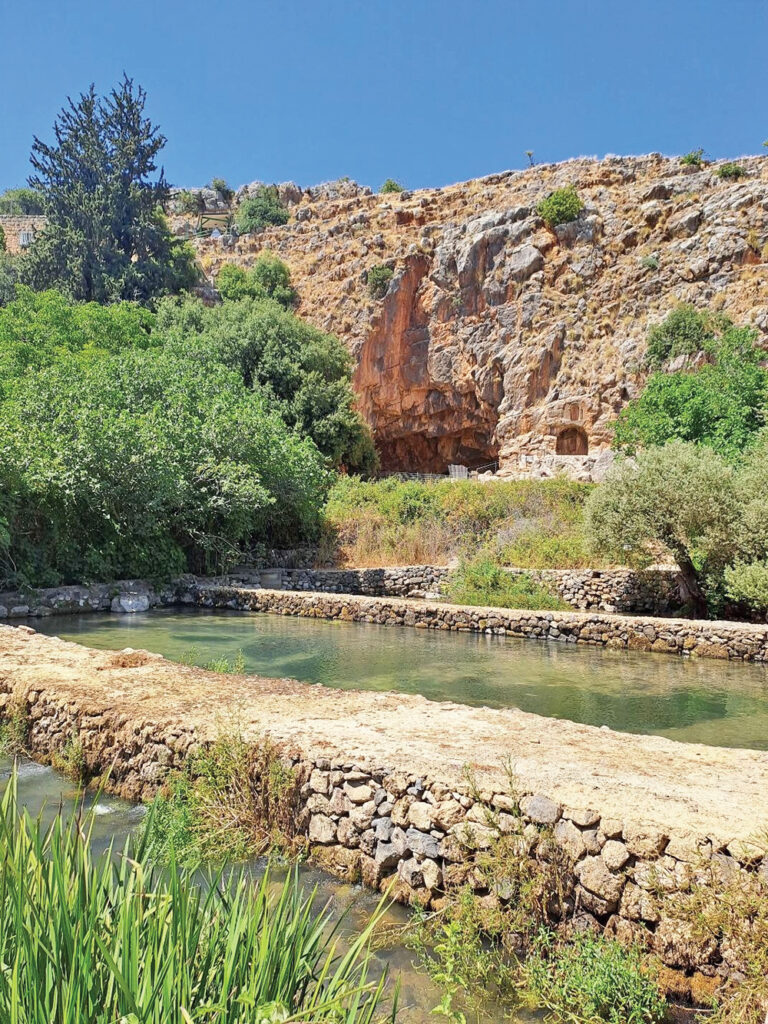
Editor’s note: Much of the information for this article is culled from material put out by the Israel Nature and Parks Authority as well as a source sheet put together by Michael Even-Esh.
A popular tourist attraction in the Golan Heights is the Banias Waterfall. Located at the foot of the Hermon Mountain, this is the largest and most impressive waterfall in the Land of Israel. The Banias, or Hermon stream as it is known in Hebrew, receives its water from the snow that melts on the top of the Hermon Mountain. From the Banias waterfall, the Hermon stream flows through the Hula Valley and later merges with the Dan Stream and enters the Jordan River.
At the Hermon Stream Nature Reserve, visitors can be impressed by the refreshing flow of the waterfall and river. Along the riverbed one can enjoy the refreshing shade in hot summer months. The vast array of flora in the area include the hadas (myrtle) tree and the arava (willow) branches which we use on Sukkot. A vast variety of fauna also inhabit the area including the red fox and the Syrian rock hyrax.

The Banias, however, is not just a gorgeous nature reserve. It is also a site of historical significance throughout the ages. After Alexander the Great conquered the region in 332 BCE, a temple to the Greek god Pan was built here. The name of the place, originally “Paneas,” was derived from its housing the temple of Pan. “Paneas” was later corrupted to its Arabic pronunciation as “Banias.” The Greek historian Xenon of Rhodes describes a battle that occurred in Paneas between the Ptolomy and the Selucid Greeks in 200 BCE. It is here that the Selucid Greeks were victorious which led to the reign of Antiochus Epiphanes and the Chanukah story! Remnants of the Temple of Pan can still be seen at the Hermon Nature Reserve.
The Romans later annexed Paneas in the first century BCE and gave it to King Herod. It is here that Herod built a temple to Augustus, the Roman Emperor. When King Herod died, his empire was divided between his three sons. Philip inherited the northern part of the kingdom and made Paneas into his capital which he called “Caesarea Philippi.” In the latter end of the first century CE, Agrippa the Second continued to use Paneas as his capital. He added luxury to the city and built a large palace and many temples.

As Christianity rose in the area in the fourth century, the pagan temples of Banias fell into disuse. By the early Muslim era (seventh century), Banias was just a small village that housed Muslims and some Jews, including Karites.
The Crusaders recognized the Banias as a strategic border between their kingdom and the Muslim kingdom of Damascus and as such fortified the area. When the Crusaders were defeated by Saladin, the importance of Banias declined until the Mamluks added fortifications. Since then, it was mostly a small village until it was conquered by Israel in 1967.
In addition to its historical significance, Banias is also mentioned in various areas of Chazal. The Midrash Rabbah teaches that after the mabul, the deluge in the days of Noah, the fountains of the depths (תהום) were closed with the exception of the Cave of Pamias and two other water sources as well. (בראשית רבה ג: ב)
Banias is also mentioned in the Gemarah Sanhedrin. The students of Rabbi Yosi Ben Kismah asked him when Mashiach will come. After answering, they asked him for a sign that his words were true (even though they had consented earlier not to ask for a sign) and he replied that the waters of the Cave of Pamias will turn to blood, which they did. (סנהדרין צ”ח)

The Gemara Bechorot discusses the Banias as the source of the Jordan River. Rav Kahana teaches that if someone swears not to drink from the waters of the Cave of Pamias, he cannot drink from the entire Jordan River. (בכורות נ”ה)
A trip to the Hermon Nature Reserve (Banias) is not just a gorgeous outing. It’s chock full of history and the words of our sages!
Hava Preil is an enthusiastic Licensed Israeli Tour Guide. She grew up on the Upper West Side of Manhattan and holds an MA in Judaic Studies. Hava has developed and taught accredited courses in Tanach and Jewish Ethics for Naaleh/Woodmont College and Cybersem. She currently lives in Givat Ze’ev, Israel with her family. Hava can be reached at IL:054-844-1579, USA: 845-391-0438 or at Havapreil@gmail.com Visit her new website Home – Hava Preil Tours havapreiltours.com!









